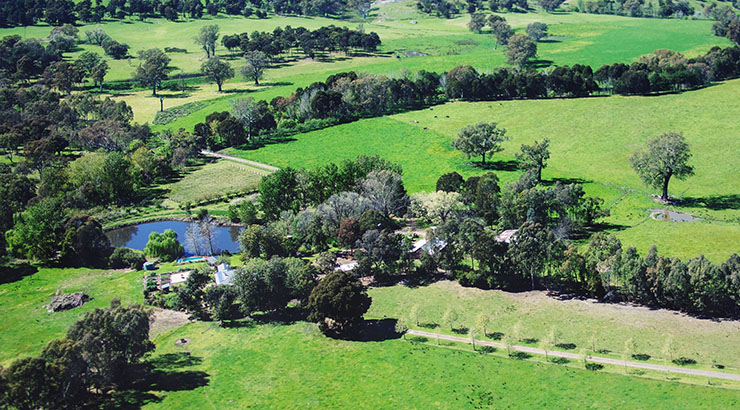
Australia’s red meat and livestock industry is uniquely positioned to store carbon in the landscape’s trees, vegetation and soils, given producers are custodians for about half of the country’s land mass.
Recognising this enormous opportunity, in 2017 MLA announced the industry would aim to be carbon neutral by 2030 (CN30) – a commitment that by 2030 the industry will make no net release of greenhouse gas (GHG) emissions into the atmosphere.
To achieve the CN30 goal, MLA has invested approximately $200 million in research and development with a further $150 million required over the next few years.
A key pillar of MLA’s investment was the formation of the Carbon Storage Partnership which focuses on products that can build industry capacity and capability in this area. Producers can use or claim this stored carbon to ‘inset’ credits against the emissions associated with their business to lower their net carbon footprint.
Being able to demonstrate a low carbon or carbon neutral position can open doors for producers to participate in a premium low carbon supply chain or branded product. Alternatively, producers may also choose to generate additional income through the sale of carbon credits as ‘offsets’ to external buyers.
To boost carbon storage on-farm, producers can plant trees that provide multiple benefits to production, such as:
- helping to conserve soil by reducing soil erosion from wind and water, increasing soil organic matter, improving soil structure, increasing water infiltration and assisting nutrient cycling
- fodder to supplement pastures for grazing stock during periods of feed shortages
- providing shade and shelter for livestock from hot winds and sun, which can help reduce heat stress and improve productivity. Strategically planted trees can also reduce wind speed and provide protection to reduce livestock losses in cold conditions – research suggests lamb mortality can be reduced by 10%.*
‘Planting trees on-farm’ tool in the pipeline
MLA and the Victorian Department of Jobs, Regions, and Precincts funded the ‘Trees on Farm’ project as part of the Carbon Storage Partnership, which is being led by the University of Melbourne.
Researcher and Project Manager, Dr Rachelle Meyer, said the project will gather information about planting trees on-farm – an area which has been heavily researched – to develop a decision tool for producers.
“We’ll use interviews with 50 producers and data that’s already been collected to inform an analysis estimating the value of integrating trees into farming systems,” she said.
“The project will deliver a decision framework to assist producers in accessing the information they need to be able to make decisions about planting trees on-farm.”
The project will develop fact sheets – available online – for specific livestock producers and regions, containing information such as pasture growth, cattle weight gain or reduced lambing losses.
“If a beef producer from Gippsland wants to know the benefits expected from planting trees, it will be different to what a sheep producer in northern Victoria would get,” Rachelle said.
Three ways to make decisions about trees on-farm
The trees on-farm decision tool developed through this MLA-supported project will help producers to:
- step through the decisions based on their goals for planting trees on-farm
- learn from their peers and see what producers have selected as critical factors for planting trees on-farm
- access information on carbon sequestration rates expected from planting trees on-farm.







